These images of Mars, Jupiter, Uranus, and Neptune were taken using the PROMPT-5 remote telescope at Cerro-Tololo Inter-American Observatory (CITO), Chile. Observation credits to Todd Austell for Mars, Rujula Yete for Jupiter, myself for Uranus, and Dr. Daniel Reichart for Neptune.
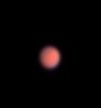
This image of Mars was taken using H𝛼, OIII, and U filters (red, green, and blue respectively). It was taken using 10 exposures per filter, with exposure durations of 0.3 sec for H𝛼, 0.6 sec for OIII, and 1.2 sec for U. Due to the small size of the planets in our images, the stacks used below were manually aligned in Afterglow. The center of each image was located by hand, allowing the stacks to be synced and merged to the same location. To bring out colors as true to the real color of Mars as possible, manual color balancing was used to adjust the scale value of the OIII and U stacks. I decided on scale values of 0.65 for both stacks.
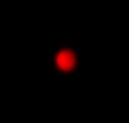
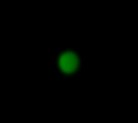
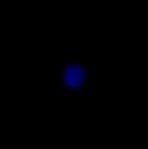

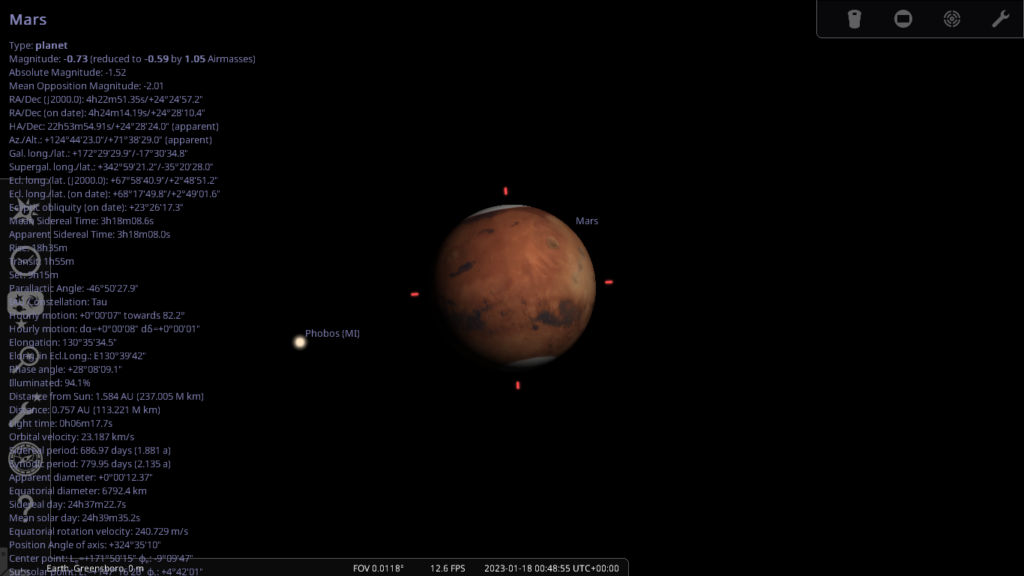
To understand the colors seen in the image I made of Mars, here is a screenshot of what Mars looks like in Stellarium (as seen on January 18, 2023). The red color of Mars (which unfortunately came out pink in my image), is iron oxide. If you look closely, you can see that the tips of Mars in my image have a blueish-white tint to them. These are more evident in Stellarium, and are Mars’s polar ice caps. These caps are made of carbon dioxide and water vapor deposits, and are due to Mars’s axis of rotation, which is about 25 degrees relative to the sun. You may also notice that the right side of the images are slightly whiter in color. These indicate deposits of ice and silica.

This image of Jupiter was taken using H𝛼, OIII, and U filters (red, green, and blue respectively). It was taken using 10 exposures per filter, with exposure durations of 1.0 sec for H𝛼, 1.0 sec for OIII, and 1.5 sec for U. The stacks used below were manually aligned in Afterglow. Jupiter was the easiest of the images I processed, and did not require the extensive color balancing used for Mars. The saturation level was raised to 100% to avoid any extraneous white pixels, and the image was tweaked slightly in editing.
Jupiter is a gas giant, and the stripes you see are the result of gases moving within the planet. The lighter regions, called zones are where gas rises upward. The darker regions, called bands, are where gas falls (https://lovethenightsky.com/jupiters-atmosphere/). Jupiter is primarily hydrogen and helium, but the zones and bands you see on the planet are caused by storms made of phosphorous, sulfur, and hydrocarbons. The white strips you see in the image above are water and ice, the yellowish-brown warm storms made up of ammonia, and the brownish-red hot storms of ammonia, hydrosulfide, and ice. Not featured is Jupiter’s red spot, which is one of these storms (https://www.universetoday.com/15152/color-of-jupiter/). Also note the brown regions at the top and bottom of Jupiter. These are the planet’s poles. Fun fact: the poles of Jupiter (and Saturn!) have hexagonal vortices.
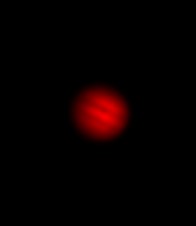
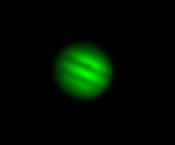

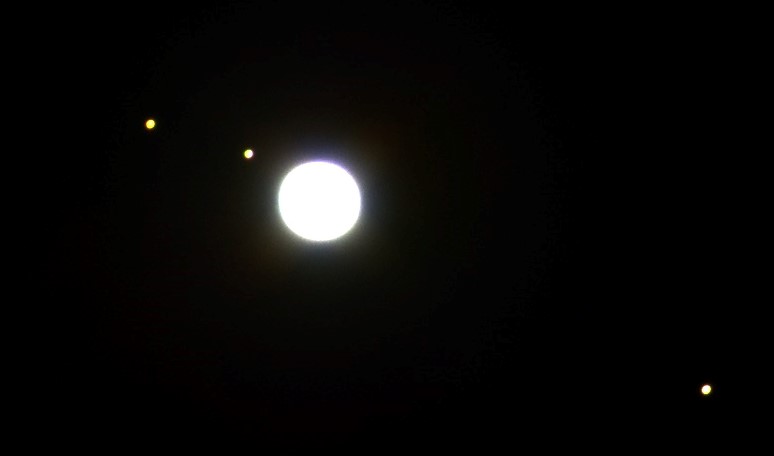
Using the same observation, I was able to showcase three of Jupiter’s four visible moons (as seen on January 22). In order from left/top to right/bottom, are IO, Europa, and Callisto. The moons were made visible by reducing the midtone level and saturation level percentage ever so slightly. Most notable is IO. If you look closely, you can see that IO is bright yellow in color. This is because it is volcanically actively. In fact, it is the most volcanically active body in the solar system. The yellow color we see is the sulfur created by this body. Europa’s body is mostly water, and is thought to be potentially habitable. Ganymede is the solar system’s largest moon, and has its own magnetic field (solarsystem.nasa.gov).

This image of Uranus was taken using R, V, and B filters (red, green, and blue respectively). It was taken using 30 exposures per filter, with exposure durations of 1.0 sec for R, 1.0 sec for V, and 2.5 sec for B. The stacks used below were manually aligned in Afterglow. To bring out the blue color of my image, I used photometrically calibrated color balancing. Using Afterglow, the background stars of the image were used to determine the colors of Uranus through the World Coordinate System (WCS). By using WCS, Afterglow is able to determine the natural color of Uranus by calibration via the values of known background stars.
Uranus gets its blue-green color from methane gas in its atmosphere. Methane absorbs light in the red portion of the light spectrum, hence the color we see in the image.
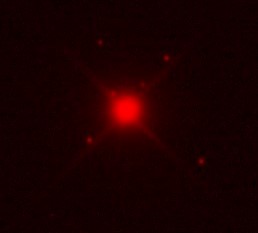
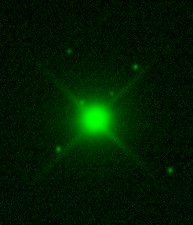
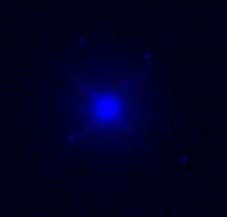
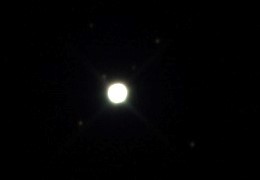
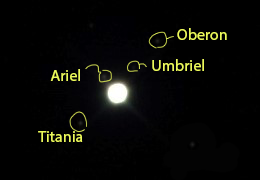
Using the same means as I did for Jupiter, I was able to showcase four of Uranus’s moons. As labelled, they are Titania, Ariel, Umbriel, and Oberon. Titania is Uranus’s largest moon, Ariel its brightest, Umbriel its darkest, and Oberon its outermost. The fifth major moon of Uranus, Miranda, is not visible, and is the smallest of Uranus’s moons. If it were in the image, it would be to the right of Uranus, about 45 degrees south-east of Umbriel from our perspective. (https://airandspace.si.edu/exhibitions/exploring-the-planets/online/solar-system/uranus/moons.cfm)

This image of Neptune was taken using R, V, and B filters (red, green, and blue respectively). It was taken using 10 exposures per filter, with exposure durations of 7.5 sec for R, 7.5 sec for V, and B sec for U. The stacks used below were manually aligned in Afterglow. For Neptune, I used the same color calibrating process as Uranus, to bring out the icy-blue color.
Neptune and Uranus have similar atmospheres, with the methane bringing out a blue-green color in both of them. Neptune however, is bluer in color. Neptune is thought to have a more active atmosphere than Uranus.
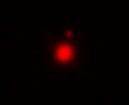
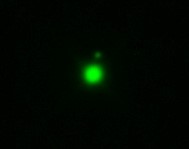
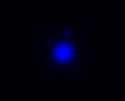
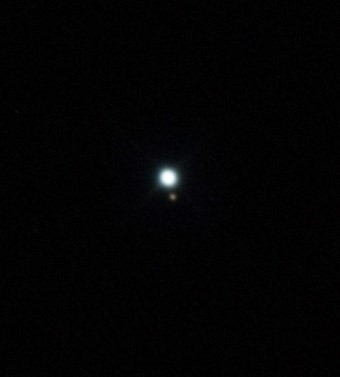
The small brown spot underneath Neptune is one of its moon’s, Triton. It is the largest of Neptune’s moons, and oddly orbits in the direction opposite to Neptune. The moon has volcanic planes, covered in frozen nitrogen (solarsystem.nasa.gov).
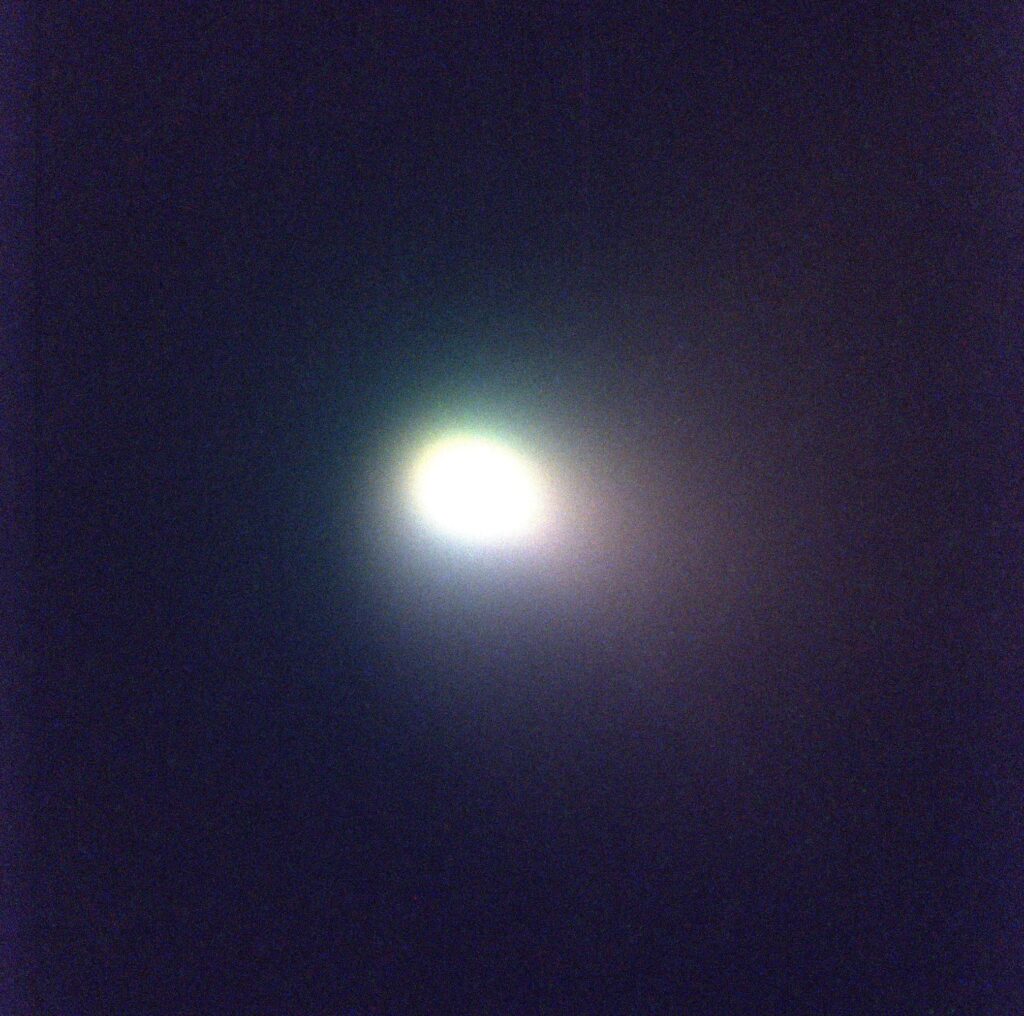
The comet C/2022 E3 ZTF passed by earth in early February of this year, and won’t be back for another 50,000 years! In places with low-light pollution, the comet could be viewed with the naked eye, giving off a bright-green glow. I aligned and stacked this image in Afterglow, and removed the background stars during the stacking process. The comet gets its name from:
C: indicates a non-periodic comet (takes more than 200 years to orbit the sun).
2022: year of discovery.
E3: the third comet discovered in the fifth half-month (E meaning the first half of march).
ZTF: Zwicky Transient Facility (the observatory it was discovered at).